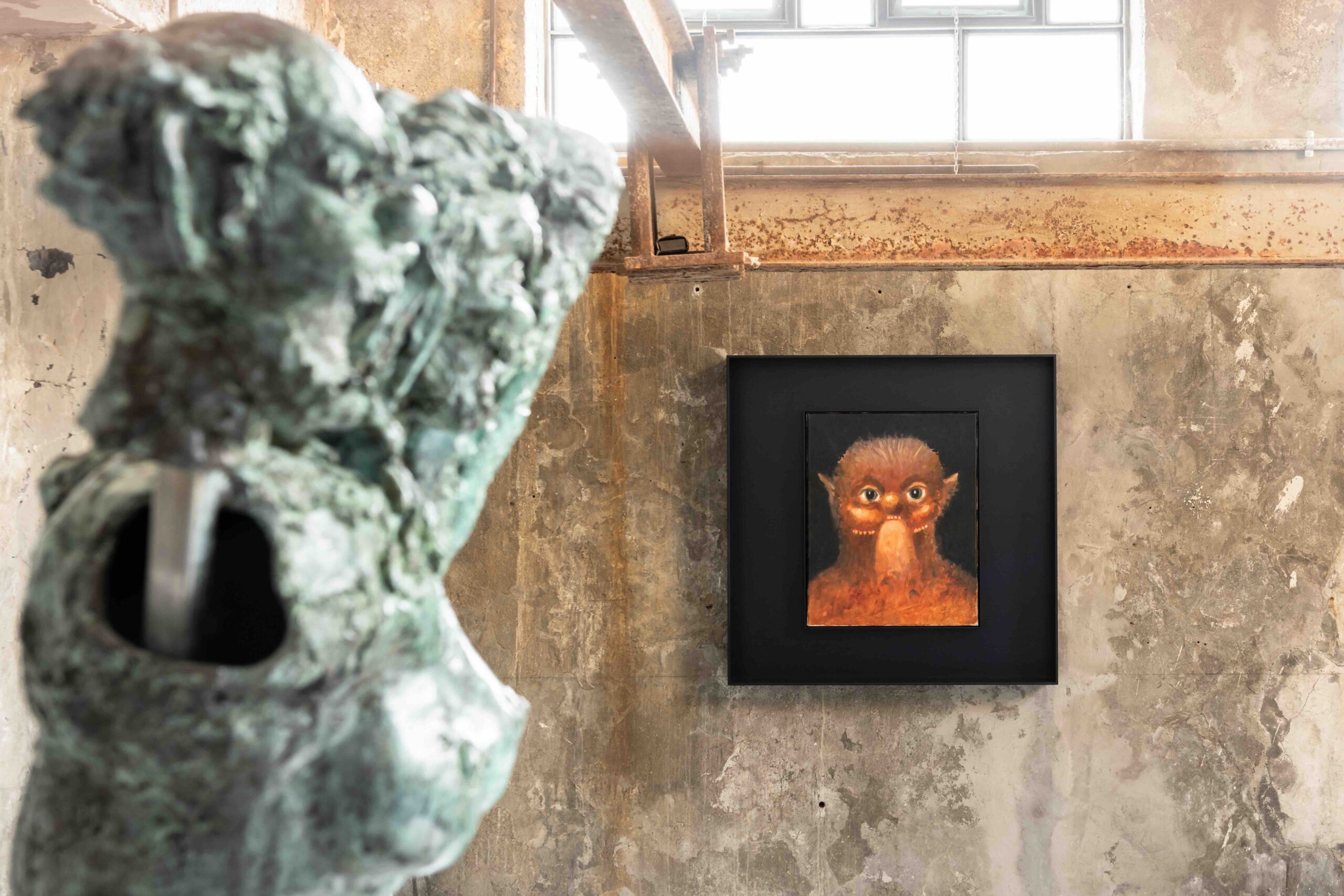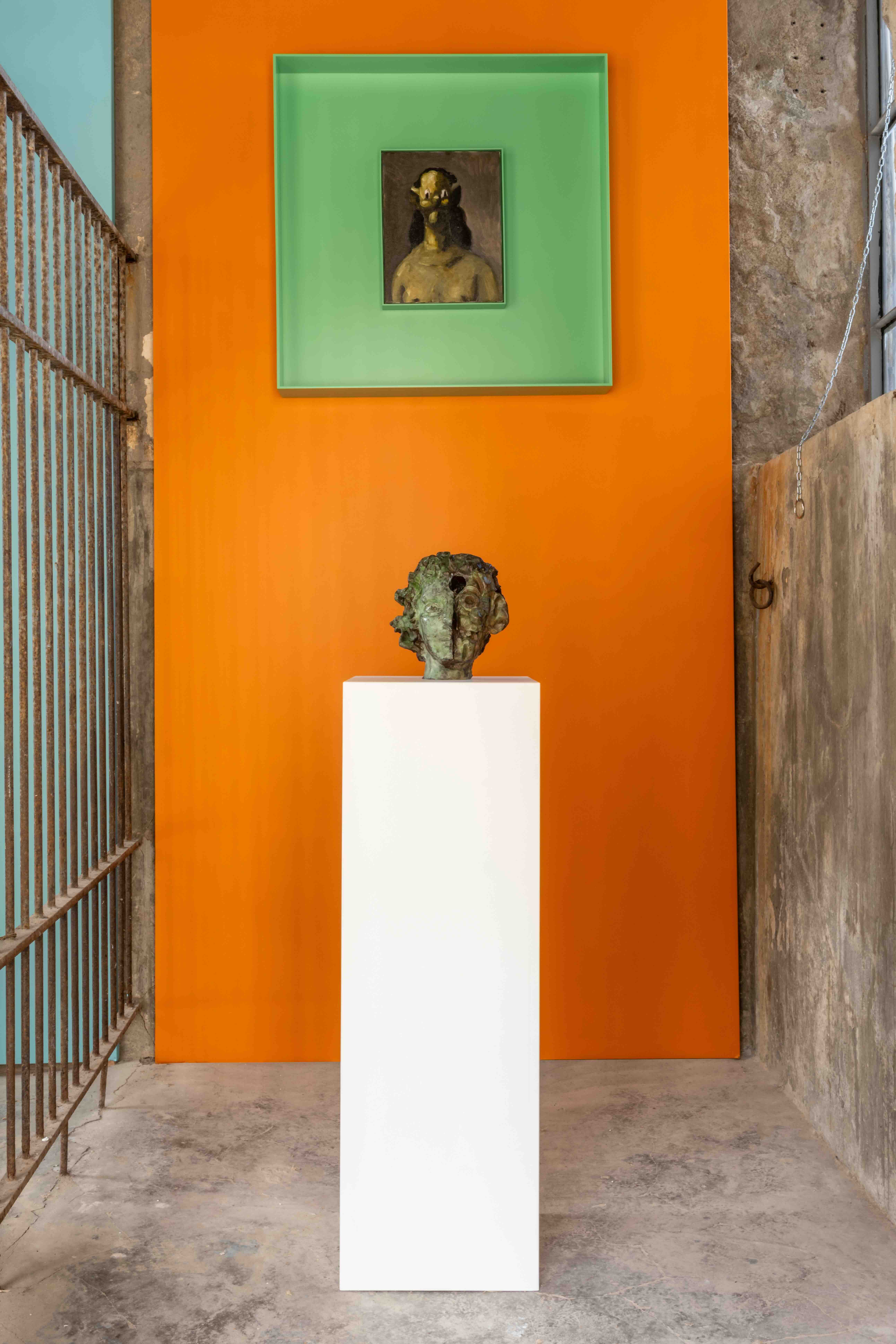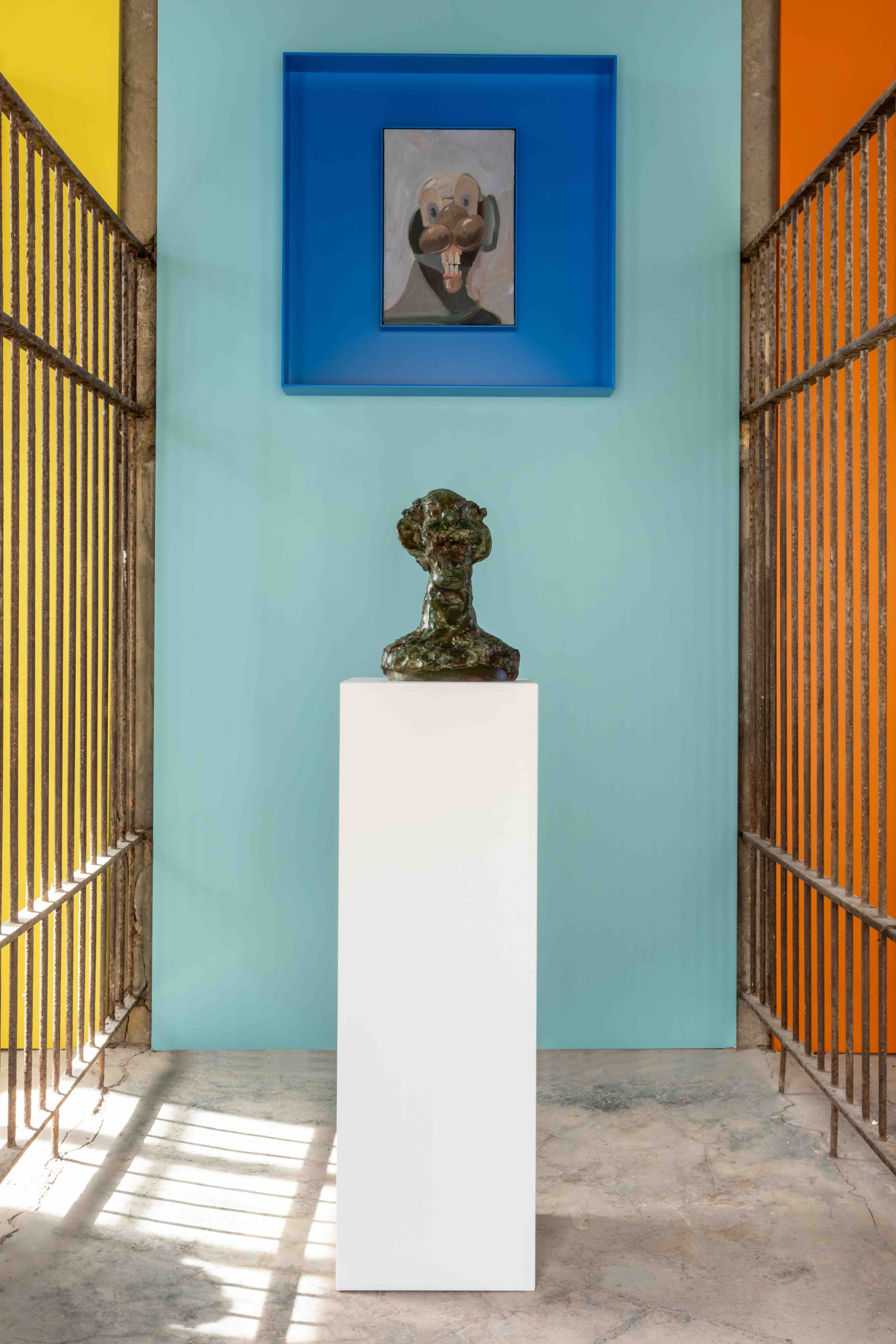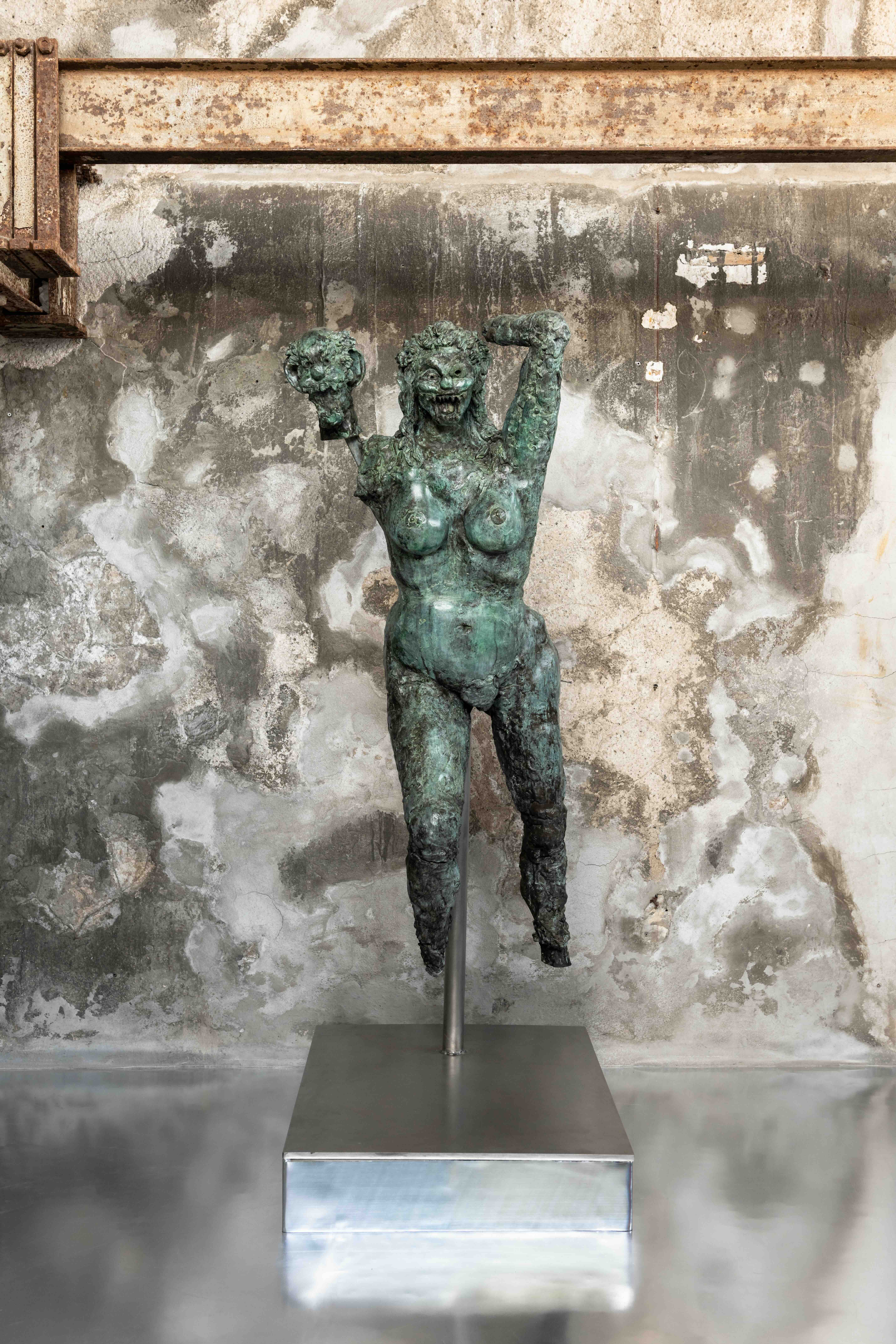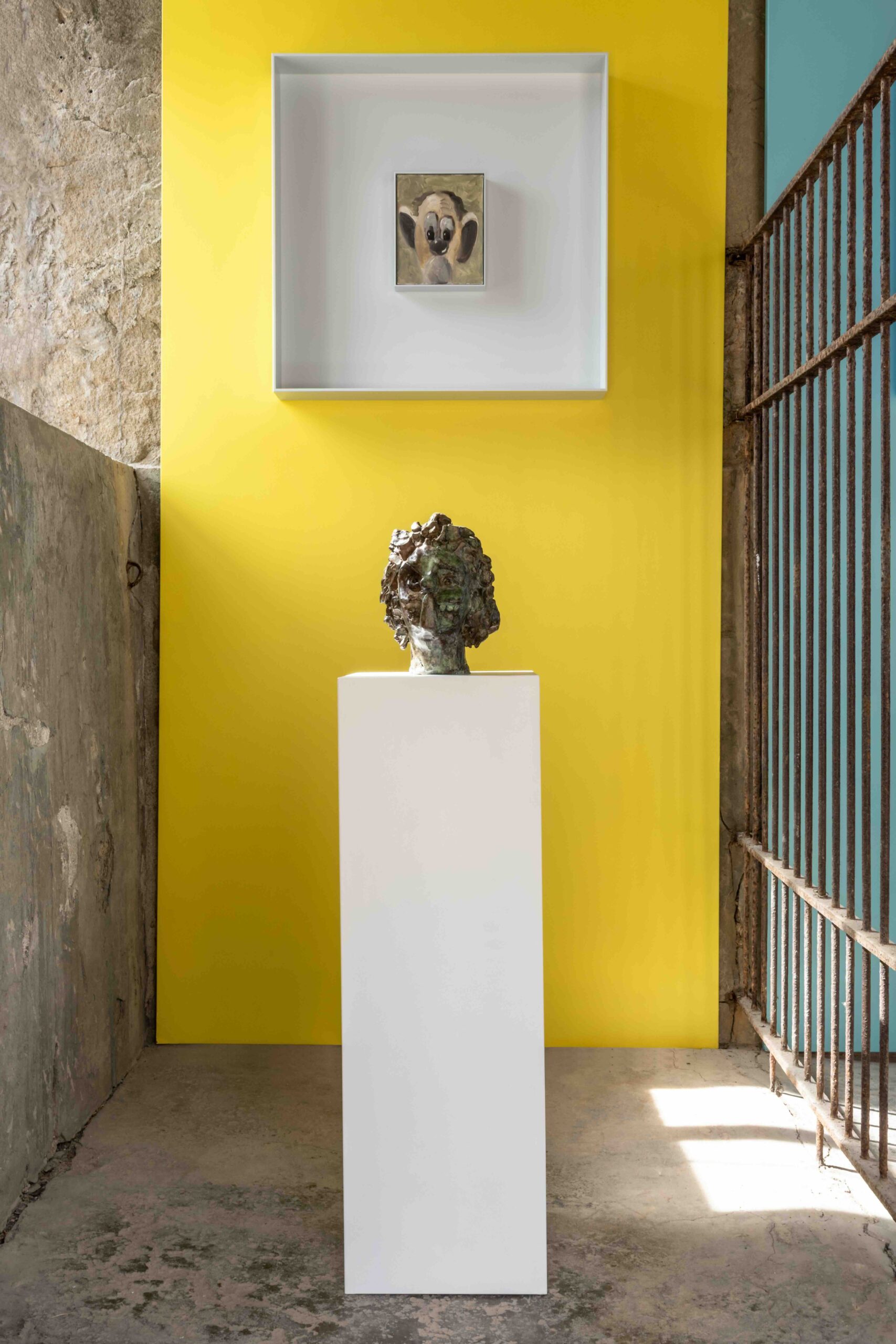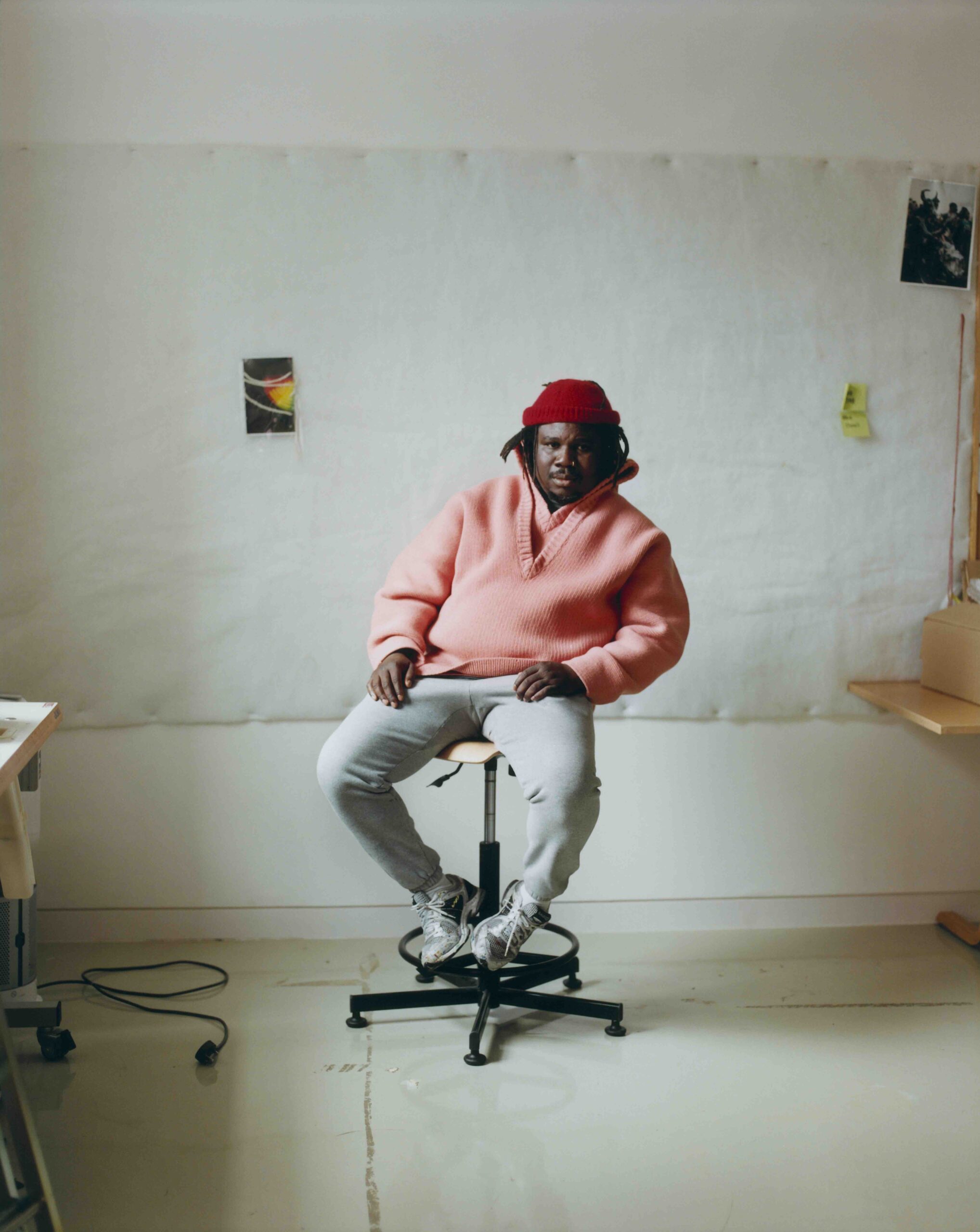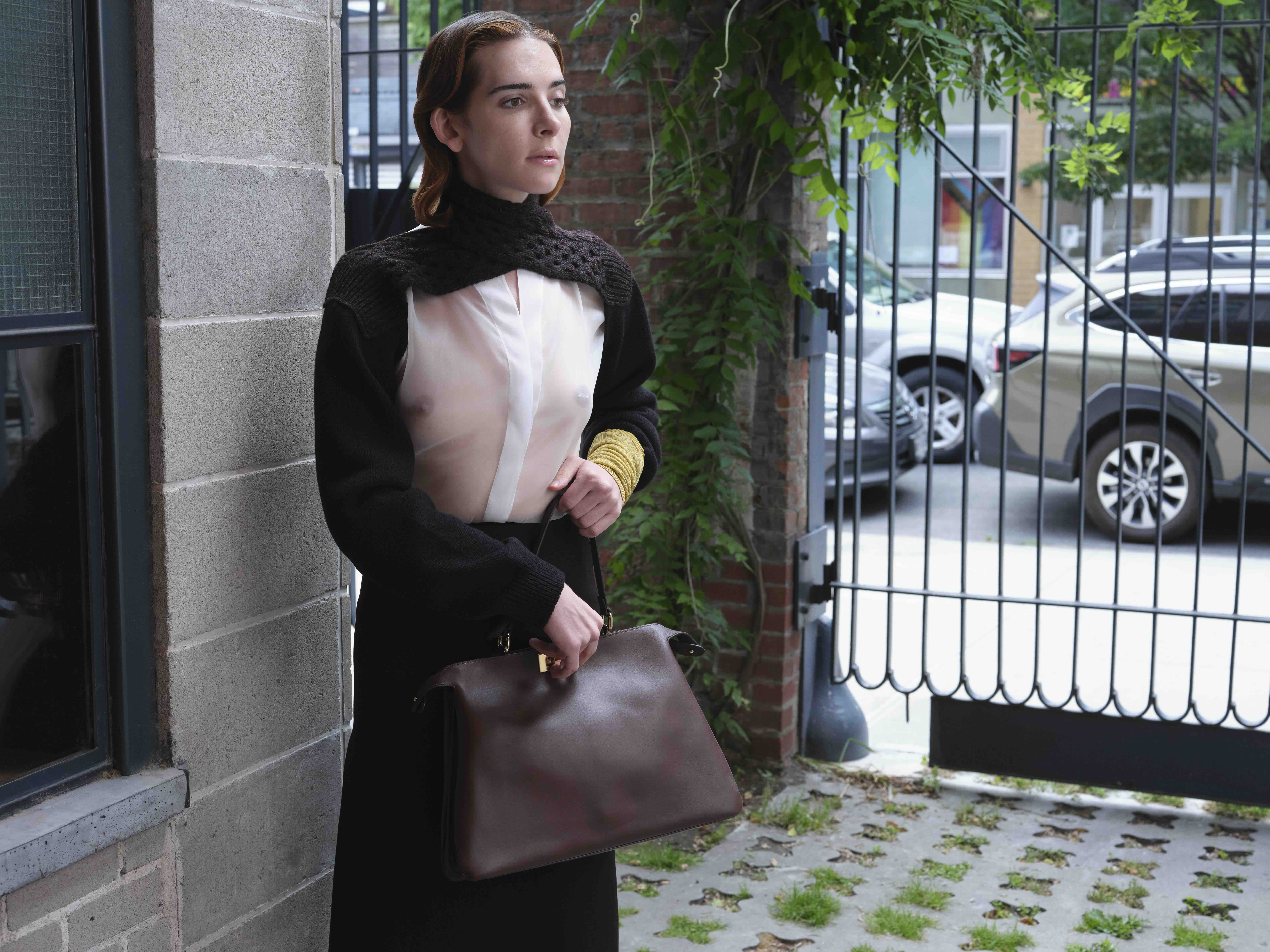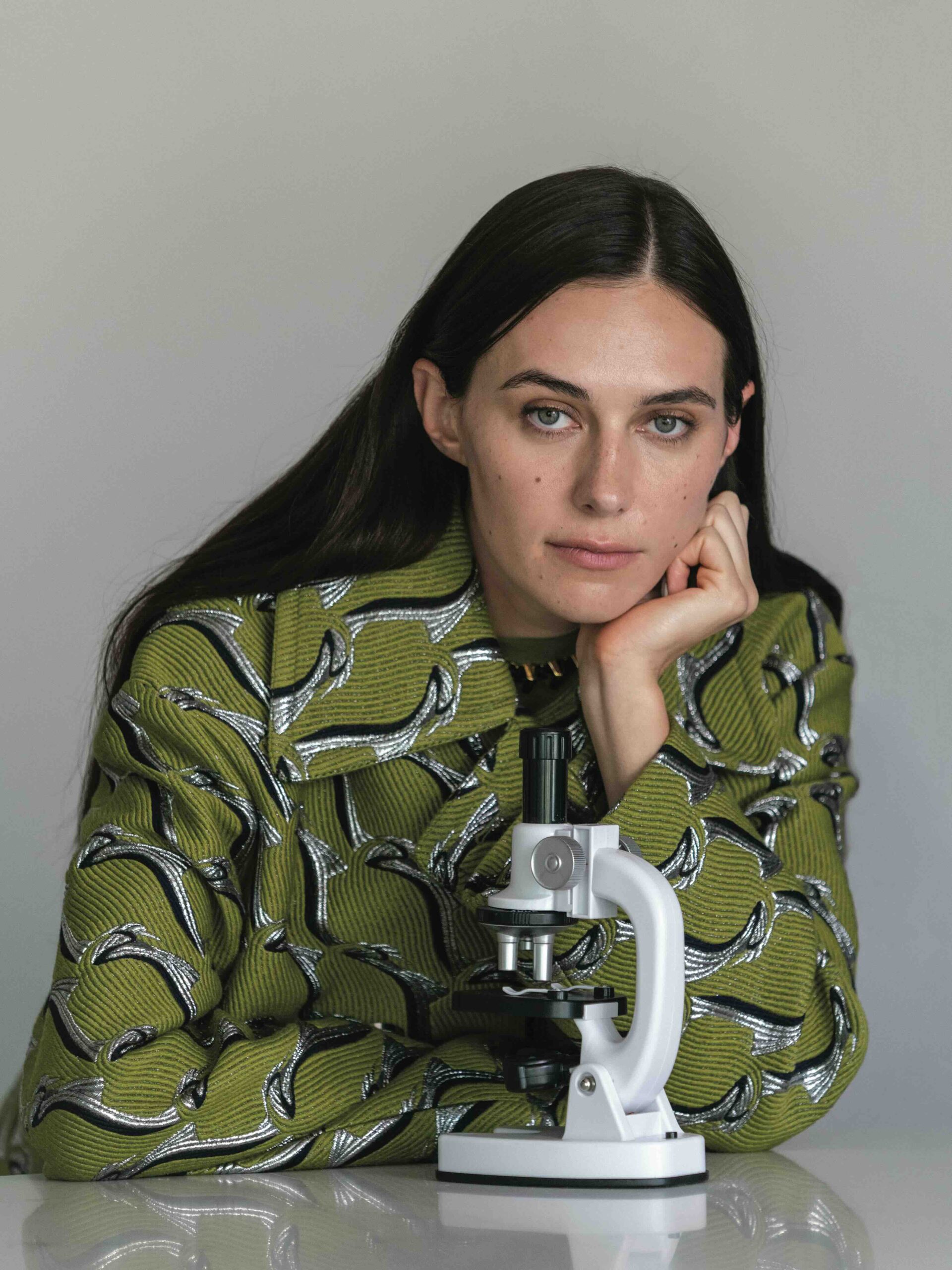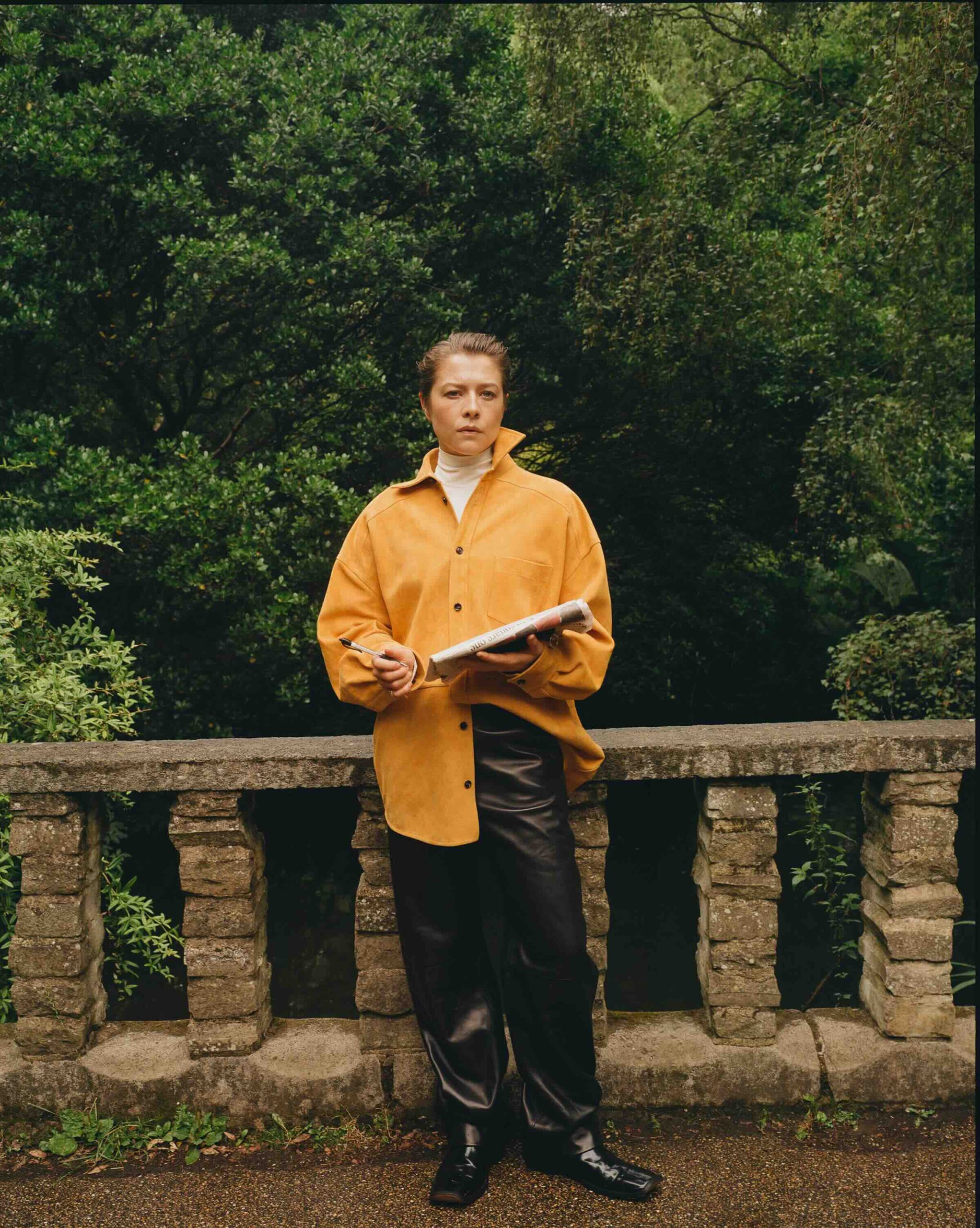Hydra, May 20th
George Condo in conversation with Andrea Goffo
On the opening night, a curious trepidation flows among the people waiting in line to enter the DESTE Foundation Project Space, the Slaughterhouse on the Greek island of Hydra. Everyone seems to be wondering what renowned American artist George Condo will have been up to inside that tiny structure overlooking the Aegean Sea that has hosted a site-specific project by an international artist every summer since 2009.
The crowd is greeted by the artist who, with a relatively serene air, converses with Massimiliano Gioni, the curator of his exhibition titled The Mad and The Lonely, and Dakis Joannou, the famous collector creator of the DESTE Foundation. They all seem pleased with the results and reactions of the first visitors who rediscover Condo’s works, which were placed in an unprecedented installation device: a series of polychromatic boxes framing his small paintings from different periods of his career. A series of small bronze sculptures complete this intimate and fascinating exhibition.
How would you define The Mad and The Lonely exhibition, and why did you choose this title?
GC In fact, it is a sort of retrospective because all the paintings and sculptures on display belong to different career moments. For example, the earliest work is from 1989. In some ways, it’s a new presentation of old works, not merely a change of location. It’s new and old at the same time. None of the paintings have ever been seen, as they are part of my personal collection and archive. I wanted this exhibition to be a time warp with a timeless aspect. The title of the exhibition refers to my everyday life in New York. My studio is a very dark space, and I work alone for many hours. At the end of the day, I feel that I am almost going crazy, partly because of the loneliness. I feel almost in exile, like Napoleon in Corsica. When I arrived in Hydra to set up the exhibition, I encountered a completely different atmosphere: the Mediterranean’s light. So, I wanted to create a contradiction between a dark title and a colourful and very positive installation.
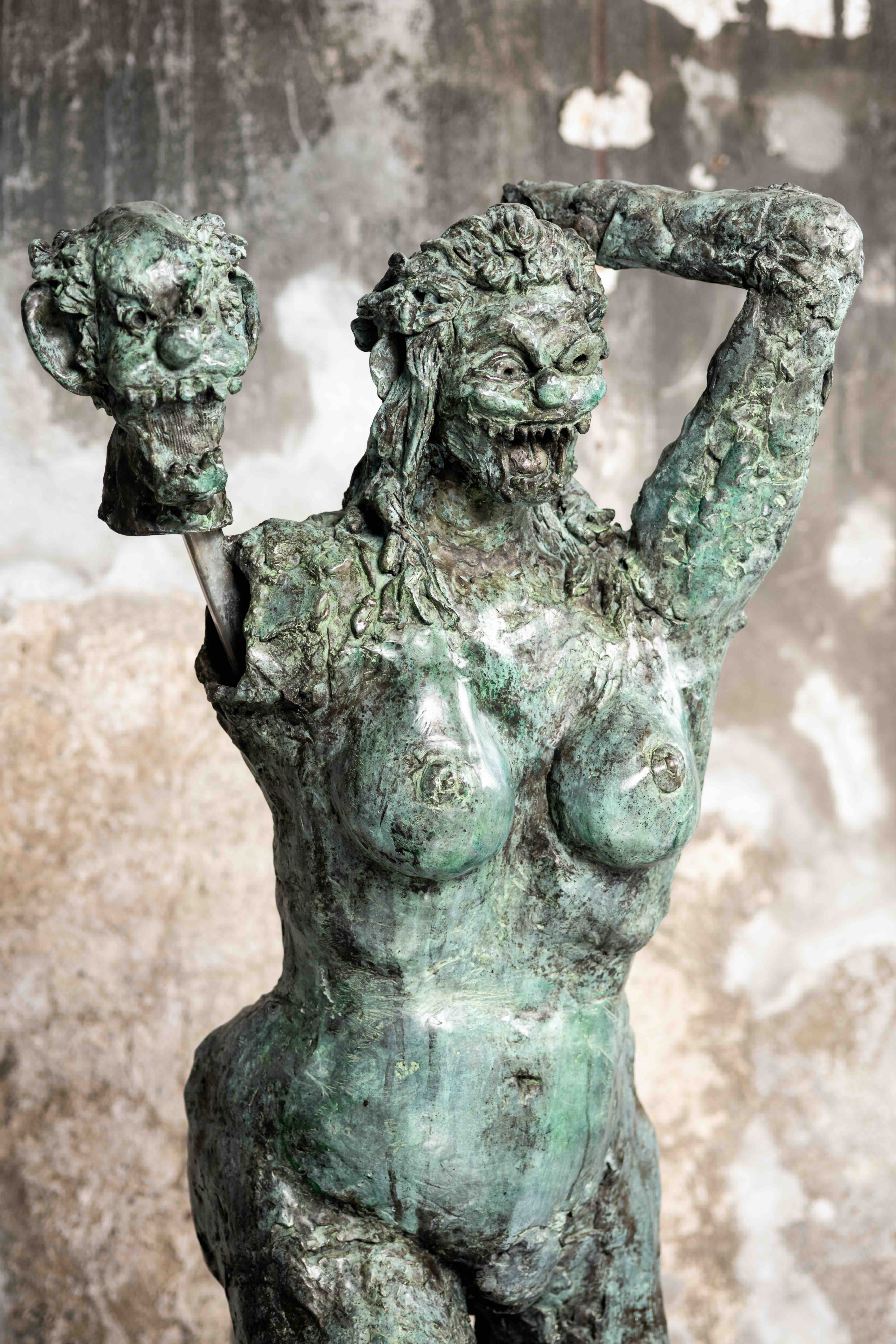
The layout of the exhibition is straightforward and effective. Where did the idea of polychromatic boxes come from?
GC It directly references the polychromatic nature of classical Greek statuary and architecture, an aspect that has been completely lost over the centuries. At the same time, it is a paradoxical homage to the work of Donald Judd, of whom I have always been a big fan. I told myself that one thing a Minimalist artist would never do is insert a figurative work within a geometric structure. It’s almost an affront, an anachronistic act. But this is how I work as a painter: I take a segment of a Renaissance painting and add it to an element from a 20th-century work, thus combining styles and languages from different artistic periods. In addition, these coloured boxes allowed me to enhance these small paintings that, if they had been hung on the original walls of the Slaughterhouse, would have been almost invisible. I needed colourful support to compel people to look at them. The idea of combining Minimalism with traditional painting is something that has never been done before.
How did the Slaughterhouse’s environment influence your conception of the exhibition? The Slaughterhouse is a monstrous yet very real place, a place that tells the identity and history of Hydra. At the same time, your intervention has turned it into a cave populated by grotesque creatures reminiscent of the Greek myths of Kronos, Perseus, and Medusa.
GC This place can also serve as a powerful metaphor for our present. After all, the world we live in is a slaughterhouse traversed by physical and virtual conflicts, from Ukraine to Gaza to the United States to China. This space, inhabited by the mythological ghosts of the animals killed here, is a platform for me to build an alternative, colourful, joyful reality. I intend not to make a political statement, but in a way, it is. I would like politicians to think like painters who consider all colours necessary without hierarchy. If politicians understood the value of these different colours in the world and worked the way painters work, the result would be far better, and the world would be more beautiful and harmonious; we would come to a dialectical resolution of opposites.
One critic called your painting a sort of art dictionary. Throughout your career, you have built a critical dialogue with the Old Masters and some crucial painters of the twentieth century like Picasso, Baselitz and Bacon, to name a few. You have compared your approach to that of Duchamp: the painting styles of other artists are simulated found objects for you. Can you explain further what you mean by this expression?
GC In 1982-1983, when I left New York and Andy Warhol’s Factory and went to Los Angeles, I thought I would only return to the city when I found something radically different from what painters like David Salle and Julian Schnabel did in those years. At first, I thought I had to focus on something that drew on the great masters of the past. At the time, I was reading a text by Glenn Gould on Bach. He argued that Bach’s genius lay in being 400 years “behind” his time. He was an 18th-century composer, but his work was about the 16th or 15th-century musical language. My admiration for Duchamp prompted me to imitate him and thus create something that appeared like a found object. The simulation consisted of painting a picture as if it had existed 200 or 300 years before.
The beginnings of your career correspond to a mythical season in New York, the early 1980s, populated by figures like Jean-Michel Basquiat, Keith Haring and Andy Warhol. What is your most vivid memory of those years?
GC I would say the acceptance of other artists who deeply understood my work. However, the critics needed to figure out which way to turn. They were very backward in their analysis. They could only refer to the fact that my work resembled Picasso. But if you put a painting of mine from those years next to a Picasso, you see it doesn’t look like him at all. Many people were urging me to go to Europe where they would better understand an American painting like a European. In Cologne in 1983, I met Monika Sprüth, who gave me my first solo exhibition with some works that had a very Surrealist spirit, close to De Chirico, who also never called himself a Surrealist. Those paintings condensed mixed states of mind into one image.
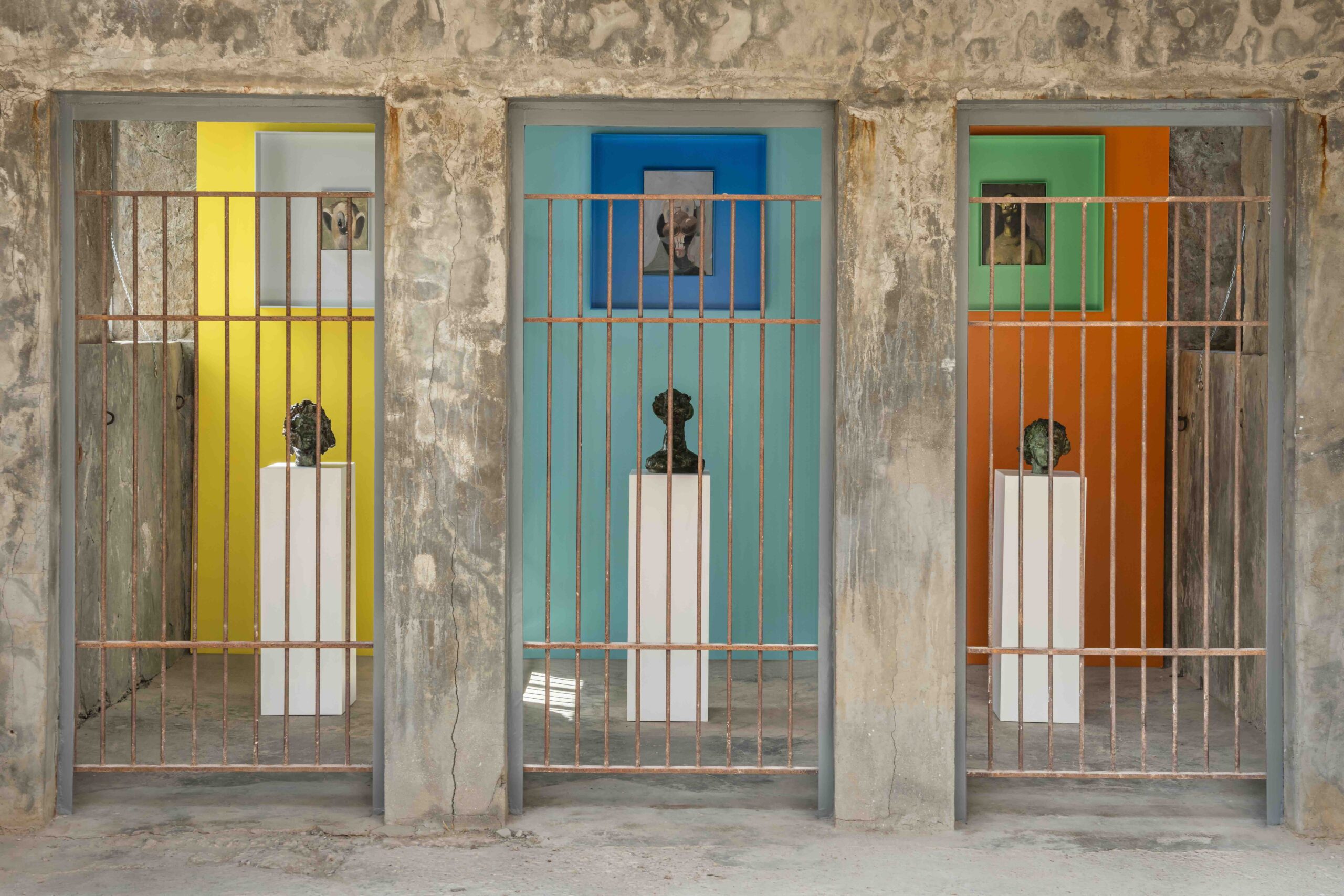
Read the full interview on Muse September Issue 64.
